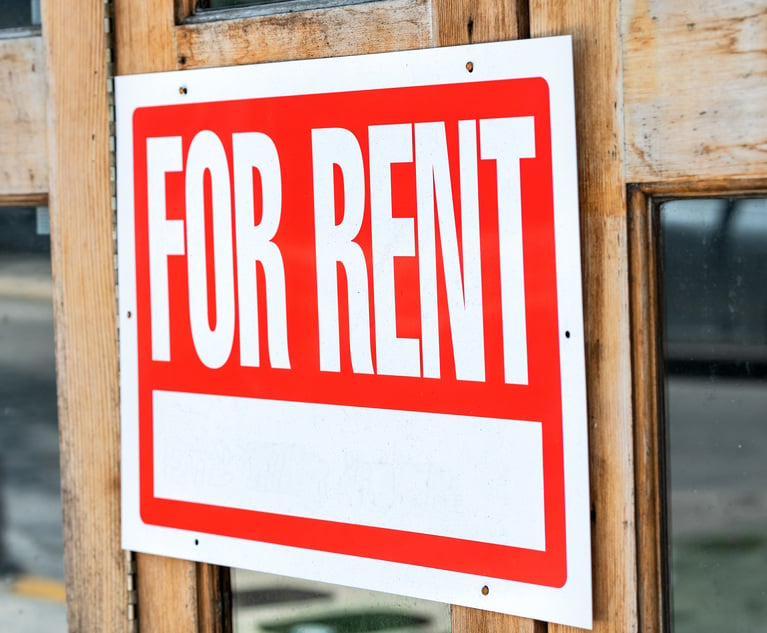Insuring high net worth individuals is a terrific business. Thelong-term financial performance of the niche has been strong forcarriers and brokers alike, and the work is both interesting andrewarding due to the fine properties and, more importantly, thepeople behind it all.
|If you're finding success in this business, there's no doubtthat your network of referral sources includes members of thewealth management community. While they come in differentshapes and sizes—registered investment advisors (RIAs), familyoffice advisors, and private bankers, to name just a few—wealthmanagers are arguably among the most influential professionals inyour clients' and prospects' lives. As such, referral sources fromthis community are coveted.
|In the last several months, I've had the chance to meet withdozens of men and women who are trusted by ultra-high net worthfamilies to protect and grow their wealth, the vast majority ofwhom have worked with numerous independent agents andbrokers. When I asked these professionals to describe how thebest agents and brokers differentiate themselves, here'swhat they said.
|They carefully uncover and addresseach client's unique exposures.
|On the surface, an account with a couple of fine homes, luxuryautomobiles, jewelry and other valuables can seem pretty cut anddried. The fact is that a poorly structured insurance programcould put massive amounts of wealth at risk.
|Frequent and thorough personal risk assessments are critical touncovering the unique exposures of high net worth families. “Iconduct regular, comprehensive reviews to understand and keep pacewith each client's life and exposures,” says Patti Clement,managing director at HUBInternational. “The client's wealth advisor is typically partof the process from day one and fully engaged when we update ourreviews each year if not more frequently.”
|During this process, it's important to:
- Align the insurance program with the estate plan andasset protection strategies. “As familiesincreasingly focus on asset protection concerns, we see them usinglimited liability companies (LLCs) to separate liability associatedwith tangible assets from other kinds of property,” says KevinLuchetta, CFP, wealth advisor with Pioneer Financial of Northwestern Mutual Wealth Management Co. “For example, theexecutive who owns a jet may hold the jet through an LLC so thatpotential liability from the jet will not reach his otherassets.”
It is not uncommon for LLCs to own homes, yachts and otherassets, and it is important that these entities are listed asadditional named insured. “One of my clients has a prettyelaborate estate plan, as his home is owned by an LLC which isactually owned by another LLC,” says Clement. “During our initialreview, the homeowners policy he shared with me had no additionalnamed insureds. That was one of the first things we addressed sonow the technical owner and occupant are properly listed.”
|In addition to LLCs, it's important to ensure that trusts,commonly used in estate planning, are also identified and properlylisted in the insurance program. Both are frequentlyoverlooked.
- Take a good look at the umbrella. “By farthe single most important specific coverage issue we address ispersonal excess liability insurance, because it helps shield thefamily's assets from claims,” says Gary Pasternack, director ofinsurance advisory at BessemerTrust. “Often clients come to us with inadequate limits.” Highnet worth specialist insurers like ACE Private Risk Services, AIGPrivate Client Group, Chubb, Fireman's Fund, and PURE all offerexcess liability limits that far exceed what is available fromdirect writers and other standard personal insurers.
While eliminating coverage gaps created by inadequate underlyinginsurance is formulaic, choosing an umbrella limit is not quite anexact science. Most agree that the limit should be influencedby the value of the assets at stake, the family's risk tolerance,and lifestyle-related risk profile. “We advise clients toconsider maintaining a personal excess liability limit which is atleast equal to their net worth, up to $20 million,” saysPasternack. “Even greater coverage amounts should be consideredwhen the client has an exposure to a large liability loss or has alow tolerance for the risk.”
||Pasternack also suggests that net worth would not includeprotected assets like qualified retirement accounts,irrevocable trusts and homesteaded residences, but should includefive to ten years of irrevocable trust distributions or othersubstantial income depended upon to pay living expenses.
- Shield the client's wealth from the uninsured.The Insurance Research Council (IRC) estimates that 12.6 percent ofmotorists, or about one in eight drivers, was uninsured in 2012.Oklahoma, Florida, Mississippi, New Mexico, Michigan, and Tennesseeare among the worst for this, as the IRC estimates that at leastone in five motorists in these states is uninsured. Comprehensivecoverage reviews of very wealthy families routinely uncover missingor inadequate UM / UIM coverage.
- Mind their business. Commercial exposuresare common and diverse in this niche. Sometimes they stem fromthe property itself, such as gentleman farms, ranches, or historichomes that are regularly toured by the public. Other times, theowner's primary business creates the risk, such as the independentconsultant who earns seven figures a year working out of a homeoffice. The “incidental business” coverage found onhomeowners' forms typically isn't enough and professional liabilityis likely excluded. In some cases, a specialist insurer willendorse additional coverage to address the exposure; in manyothers, obtaining commercial coverage isnecessary. Regardless, it starts with understanding theexposures.
- Address the nanny. And the home healthaide. And the… Be sure to identify all of thedomestic staff and list them on the appropriate policies. Justbecause that nanny, chef, or gardener has been with the clients fora long time doesn't mean employment practices liability coverageisn't necessary. Become an expert in domestic workers'compensations laws, options, and procedures so you can be anadvocate for clients with qualifying employees, whether thecoverage is 'compulsory' or not in a given state.
- I.D. the D&O risk. It's quite commonfor wealthy clients to serve as directors or officers for a varietyof professional, philanthropic, or other not-for-profitorganizations. Find all of them, then obtain the appropriatecoverage, whether personal, commercial, or both.
They emphasize alignment of interests with theclient
|If you visit the websites of many of the most distinguishedfamily offices and other boutique investment advisories, it is hardto miss common principles of alignment of interests, elimination ofconflicts, and transparency. These manifest themselves in a varietyof ways, from disclosures of fees and other compensation to theadvisor's investment of his own funds alongside his clients'. It's no surprise that this community seeks the same principles ininsurance transactions.
|“Full transparency is crucial. Eventhough an agent is compensated by the carrier, the most effectiveagents that we see focus on putting their clients' interests firstby always seeking options for the best and appropriate coverage,without regard to their own compensation,” said Michael Zeuner,managing partner, WEFamily Offices. “For example, an aligned insurance brokerwill take the time to identify all the possible risks, and explainwhere insurance could mitigate those risks, as well as where it maynot be an effective mitigate, as opposed to automatically proposinginsurance solutions to every situation.”
|Simple ways agents can create alignment and transparency includedisclosing all of the markets considered and quoted on the client'sbehalf, placing the client in the best available writing company(even those marketed as “new business companies”), and aligningwith insurers that embrace the same principles.
Want to continue reading?
Become a Free PropertyCasualty360 Digital Reader
Your access to unlimited PropertyCasualty360 content isn’t changing.
Once you are an ALM digital member, you’ll receive:
- All PropertyCasualty360.com news coverage, best practices, and in-depth analysis.
- Educational webcasts, resources from industry leaders, and informative newsletters.
- Other award-winning websites including BenefitsPRO.com and ThinkAdvisor.com.
Already have an account? Sign In
© 2024 ALM Global, LLC, All Rights Reserved. Request academic re-use from www.copyright.com. All other uses, submit a request to [email protected]. For more information visit Asset & Logo Licensing.








